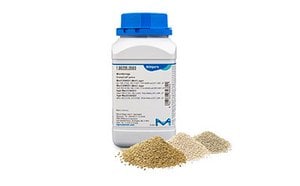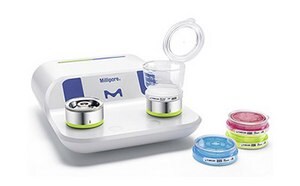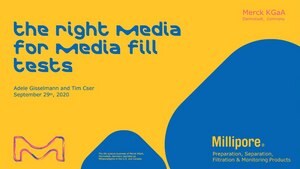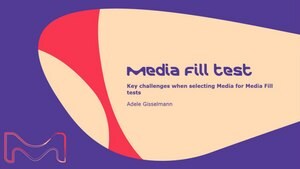Aseptic Process Simulation (APS)
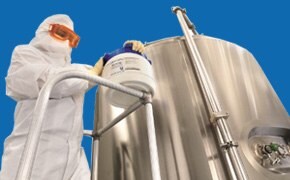
Aseptic Process Simulation (also known as Media Fill test) is a critical microbiological test carried out to assess the performance of an aseptic manufacturing procedure by replacing the pharmaceutical or beverage product with a sterile culture media. Aseptic manufacturing is a complex process used in the pharmaceutical, food, and beverage industries. Good manufacturing practices (GMP) require pharmaceutical and beverage companies to regularly perform Aseptic Process Simulation (APS) to ensure that environmental controls are sufficient to meet the essential requirements for producing a sterile drug through aseptic processing.
The nutrient growth medium is selected based on the product quantity and the selectivity, clarity, concentration, and suitability of the medium for sterilization. The Aseptic Process Simulation test should imitate, as closely as possible, the routine aseptic manufacturing process and include all critical subsequent manufacturing steps.
Featured Categories
Discover high-quality microbial culture media. Choose from dehydrated or ready-to-use options, meeting industry standards and regulatory requirements.
Laboratory instruments and consumables for sterility testing in microbiological quality control: Sterility test media, pumps, hardware and accessories.
Speed up your time-to-result with rapid microbial testing using our complete membrane filtration systems; used in bioburden testing, food and beverage analysis, and cannabis microbiology testing.
Aseptic Process Simulation (APS) Procedure
A well-designed APS guarantees representation of all aseptic manipulations performed during production. These include preparation and assembly of product containers, transfer of the product containers to the fill area, and all steps downstream from the sterilizing filter up to product release, including packaging into finished product containers.
After filling, finished product containers with medium should then be incubated for microbial growth. Containers with contamination are expected to exhibit observable evidence of microbial growth after suitable incubation. All steps intended for aseptic manufacturing should be reproduced in the simulation, including sampling and dilution of the final product. APS are also accompanied by surface and air monitoring in the critical production area.
Culture Media for Aseptic Process Simulation (APS)
Culture media used in APS should support the growth of a wide variety of microorganisms, including aerobic bacteria, yeast, and mold (non-selective medium). Soybean casein digest medium (SCDM), also known as tryptone soya broth (TSB), is the most common medium used in pharma APS due to its low selectivity, growth-promoting properties, high solubility, and media clarity.
During media selection, growth promotion tests are used to ensure the media supports microorganism growth. This is an essential control for APS because the desired test result of “no growth” is valid only by demonstrating the medium’s ability to support microbial growth. The organisms to be tested are stated by pharmacopeia.
For sterility tests in aseptic beverage filling lines, the most widely used medium is Linden Grain medium (LGM). LGM provides a sensitive, nutritive broth for microorganisms (e.g. yeast, mold, bacteria). The pH is adjusted to match the pH of the beverage filled through the line. After incubation, turbidity caused by microbial contamination can be easily checked due to the clear, light-yellow color of LGM.
Incubation Conditions for Aseptic Process Simulation (APS)
The incubation temperature should be suitable for the recovery of bioburden and environmental isolates. For regulatory compliance, media-filled containers are incubated under suitable conditions, usually for 14 days. A common procedure is to make use of two temperatures 7 days 20-25 °C and 7 days 30-35 °C in sequence. This two-stage process provides an opportunity for fungal growth, before the plates are overwhelmed by bacterial growth.
Frequency of Aseptic Process Simulation (APS)
Normally APS should be repeated twice a year in pharmaceutical production, once a year in the beverages industry, per shift and process. Three APS should be conducted on three separate days to initially qualify an aseptic process before starting the production. Additionally, APS should be conducted whenever significant changes are made to the aseptic process (e.g., changes in personnel, components, or equipment) and whenever there is evidence of a failure to maintain product sterility.
An assumption made during APS is that all other factors that could affect product sterility, such as the sterility of containers and closures, and the efficiency of the equipment and filtration stages, are satisfactory and validated separately. The results of APS trials demonstrate how likely it is for unit contamination to occur throughout the normal filling process.
Visit our document search for data sheets, certificates and technical documentation.
Related Articles
- High quality granulated and ready-to-use culture media irradiated for accurate and reliable aseptic process simulations.
- Adapt culture media for optimal microbial growth, considering nutrients and environmental conditions.
- Selective media enable faster results and visual confirmation for the detection, identification, and enumeration of microorganisms
- Chromogenic media enable the selective detection of S. aureus, which produce bluish-green colonies that are clearly differentiated from other species.
- Plant-based vegetable peptones are strictly of non-animal origin, so they pose no risk of carrying animal and human diseases such as BSE into fermentations and produced materials.
- See All (8)
Related Protocols
- Cell culture protocol for testing cell lines for bacterial and fungal contamination. Free ECACC handbook download.
- Initiating a Starter Culture
- Enzymatic assay of lipase type XIII from Pseudomonas sp. using a coupled enzyme system of glycerol kinase and glycerophosphate oxidase (EC 3.1.1.3)
- See All (3)
Find More Articles and Protocols
Related Webinars
In this webinar, our media fill experts give an overview of what to consider when selecting media for aseptic process simulations.
In this webinar, we cover the requirements for aseptic manufacturers when selecting media for media fill tests or aseptic process simulations.
How Can We Help
In case of any questions, please submit a customer support request
or talk to our customer service team:
Email custserv@sial.com
or call +1 (800) 244-1173
Additional Support
- Chromatogram Search
Use the Chromatogram Search to identify unknown compounds in your sample.
- Calculators & Apps
Web Toolbox - science research tools and resources for analytical chemistry, life science, chemical synthesis and materials science.
- Customer Support Request
Customer support including help with orders, products, accounts, and website technical issues.
- FAQ
Explore our Frequently Asked Questions for answers to commonly asked questions about our products and services.
To continue reading please sign in or create an account.
Don't Have An Account?